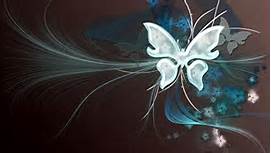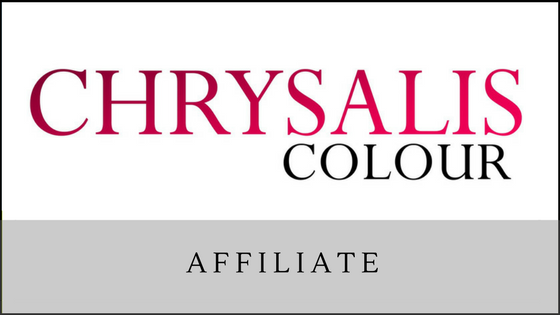Absolutely!
Have you ever been to a concert where the people on stage had just a blue light shining on them? What color were they? Blue… and only blue! Why?
There are two ways to see an object. One is if the object itself is a light source. The other is if an object has light shining upon it. Without light, we cannot see color. The colors we see are a reflection of the colors contained within the light source reflecting on an object.
So, if the only color in a light source is blue, that is the only color that can be reflected back.
Lighting #1
You are in a store that uses bright fluorescent lights, which usually are quite blue. You see yourself in the mirror and look pale, gray, and blotchy.
Lighting #2
You are in a dimly lit restaurant with soft lights that contain a lot of yellow. You see yourself in the mirror and it seems like you have a warm glow from candlelight which makes you appear younger and almost flawless.
Neither of these scenarios are what you really look like. You only look that way because of the light source.
To see a person’s coloring (or the color of any object) for what it really is, the light source must contain all the colors of the rainbow. The sun, our natural light source, fits the criteria. Indoor lighting doesn’t.
This is why full-spectrum lighting is so important for conducting a PCA. Make sure full-spectrum light is being used – not just daylight bulbs – they aren’t the same.
In my last article, I talked about the importance of using neutral gray to enable us to see colors very close to what they really are. This is why neutral gray must be used in the consultation environment. What items need to be gray?
- Walls should be painted neutral gray, if possible, especially any walls that can be seen in the mirror while doing an analysis.
- The client must wear a gray cap or scarf and cape to cover their hair and clothing. Hair has color and can interfere with the analysis, even if the hair color is natural. If a client’s hair is naturally gray, or if their head is shaved, sometimes analysts don’t use a cap. That is okay.
- The analyst must wear a gray coat because they are standing behind the client, and any colors they wear would be in the field of vision which could alter the client’s coloring.
- Backdrops are used if the environment can’t be painted, such as conducting business in a hotel or salon, and should have a neutral gray backdrop curtain.
What can happen if color analysis is performed in an improper environment? Here is a true story about a client:
A woman, I’ll call Jane, contacted me two days after she and her daughters went to a local salon for their PCAs. She was uneasy about the service they received and the quality of the analysis. She was told she was a True Spring and her two daughters were Dark Autumns. She said the analysis took only about 20 minutes (an upcoming article titled, “How Long Should a PCA Take?” will discuss this). They were in a salon without full-spectrum lighting or neutral gray surroundings or neutral gray clothing. They were in the middle of the room with people wandering about. As they were being draped, the analyst asked a co-worker who was passing by, which blue looked better. Without breaking stride, the co-worker gave her opinion and went about other business. WHAT???
Jane started feeling uneasy about this experience. She asked about the credentials of the analyst. She was told the owner was trained and then showed some of her employees how to do it – not formal training. As she was paying for the service, she could see on a piece of paper, the name Sci\ART. She had never heard of it, so she went home and started to research everything she could about Sci\ART and ended up with my name.
Needless to say, I was in disbelief that someone trained in Sci\ART could conduct a PCA under all the wrong conditions, as all of us were taught the importance of full-spectrum lighting and neutral gray, among other things.
Jane and her daughters came to see me to find out or confirm their seasons. Jane was a Dark Winter, as was one of her daughters. The other daughter was a True Winter. I found all three were not the season they were given.
As we went through the draping process, I explained the effects we were seeing in the mirror and why I chose each drape. Jane stated that “none” of that information was given at the salon…nothing was explained at all.
Unfortunately, this type of thing is happening more than I ever realized. Make sure your PC will be done with full-spectrum lighting and neutral gray surroundings. It’s also best to be in a quiet area, not out in the open, so the analyst won’t be distracted and is able to give you her full attention.
Again, the reason I am writing these articles is to help you, the client, know what your PCA should be and give you information to help you enjoy your experience and be confident in the result.




Terry,
As usual, you provide incredibly informative and useful information about making a PCA the best it can be. Please keep sharing!!!!
All my best,
Leslie C.
Thank you for providing a clear understanding of why a neutral background (grey) is used. Before I was draped in Sci/Art I was draped (non Sci/Art) at my kitchen table with the lights from that room. The process took half an hour tops. I tried out that season and I just felt very uncomfortable. Finally, I decided to have a last ditch try at being analyzed. I went to a Sci/Art Analyst (happened to be Christine S). I was draped in a totally different season. I finally felt comfortable. I felt like I had come home. I got my fan right away. I got colours I had never thought of trying in my fan which I love.
Terry, when you and Christine talk about neutral grey background, what exactly do you mean with the word “neural”? Does it imply that the grey belongs to a neutral season – if so, which one, or does it matter? Or do you mean the grey to be neutral in all three scales of colour (hue, value & chroma)? If that’s the case, which season would it belong to – Light Spring or Summer maybe? Or is there a grey that sits between all seasons and doesn’t really belong anywhere?
Good question! The eight neutral seasons in color analysis have yellow, green, red, and brown grays, depending on what season you are looking at. The neutral gray we are talking about should not contain any noticeable red, yellow, blue, green, or brown tones nor create a reaction on the skin. Just combining black and white would produce a gray that is too cool and isn’t heat neutral. To achieve the gray we need, we would combine primarily black and white with small amounts of red and yellow. It keeps the gray from being too cool or too warm. One example of neutral gray paint would be Behr Steam White 750E-1.
This is all very interesting and unfortunately I fear my own Sci/Art PCA was not carried out under these ideal conditions. There was no neutral gray background and the analyst was wearing black jeans and gray t-shirt.
I have a question about how the analysis should begin. I have read two different descriptions about how the initial drapes are used by Sci/Art analysts, which differ from how my own PCA was conducted (so a third method). I wonder if you could clarify which is correct? In one, a video shows how the gold, silver and bronze-y drape are used to test warm, cool, neutral respectively, and then black and brown are used to test cool and warm again. In another (description from client who had process explained to her as it was performed), the gold, silver, brown and black drape were used to determine, respectively, if she “leaned” to spring, summer, autumn or winter. In my own analysis, we used gold, silver, bronze and black, but never the brown drape. How should these drapes be used and what are they really measuring?
Do you feel that the season given to you is correct by means of wearing the clothing and makeup for that season? If not, you should be re-draped in the right environment. I have no knowledge about the Gold, Silver, Bronzy drape method. I don’t necessarily see Bronze as a neutral and wouldn’t trust it as such. We do the Gold (Spring), Silver (Summer), Brown (Autumn), and Black (Winter) set of drapes first. They represent the four seasons and their offspring (the neutrals); i.e., the Black drape represents DW, TW, BW. We are only gaining information about reactions on the face at this step, not determining anything about a seasonal result at this point. These are great questions about the drapes themselves. I will be addressing them in upcoming articles, one of them titled, “Does the Test Order Matter?,” explaining the order of the drapes and why they are used.
No, it’s never felt right, and I did request a re-drape, and the analyst did agree to perform one, but then I didn’t follow through on it because I questioned her ability. I have read so many comments from other clients of the same person where the process varied (from person to person), and where some of these other people later found they were different seasons by different analysts. Your posts about an ideal PCA are restoring my faith in the overall method, as I can see now that it isn’t just as subjective as different analyst equals different result, but that if the method is followed correctly, it should yield only one correct result.
This has been such a puzzle for me. I’ve actually managed to find an image online of what look like the initial drapes I saw, which are metallics in bright silver (winter, although we never used this one), matte silver (summer), bright gold (spring), and matte gold (autumn, the one I described as bronze). It would seem that this analyst, despite being Sci\Art trained, has incorporated a different set of drapes into her kit.
The analyst probably did incorporate more drapes. I can’t speak to the accuracy of their drapes, they could be technically correct, but then again, maybe not. Adding to a set of drapes seems simple, but it very difficult to make sure it is placed in the right season. One has to be able to correctly harmonize the palette. Not every analyst has that ability. The only drapes from Sci\ART, to my knowledge, were the Gold and Silver drapes, which have been around since the 1980’s as they were used to help determine if a client could wear gold or silver jewelry better in the four-season approach. We use them for more than that now.